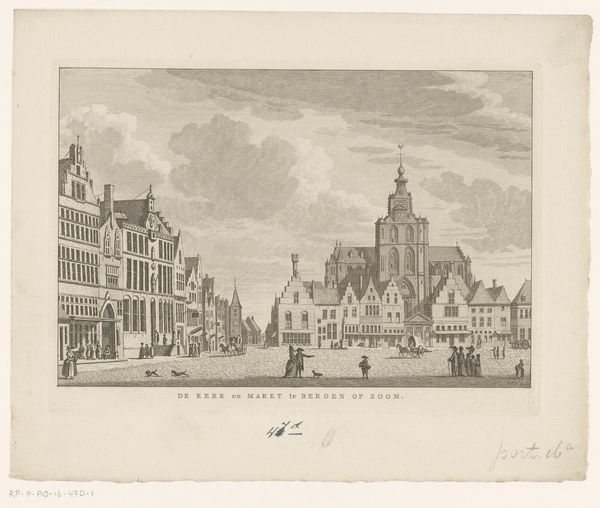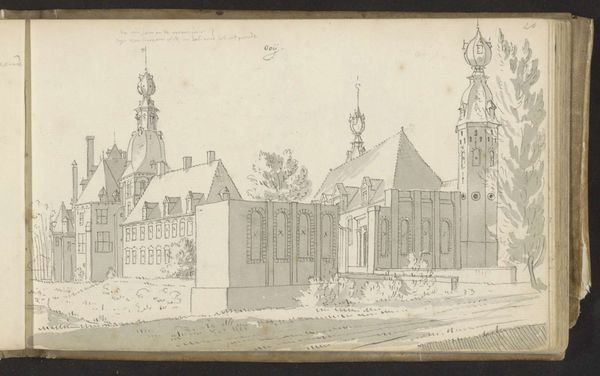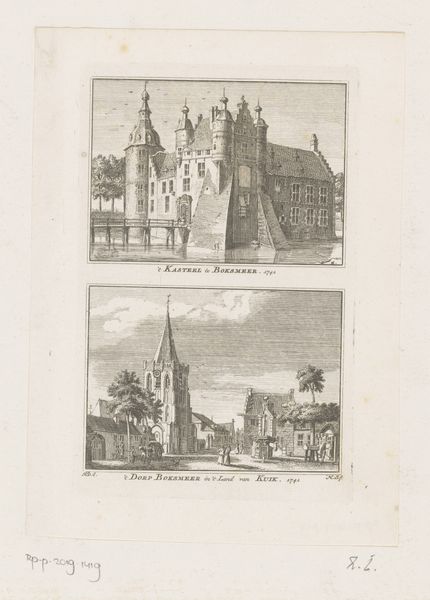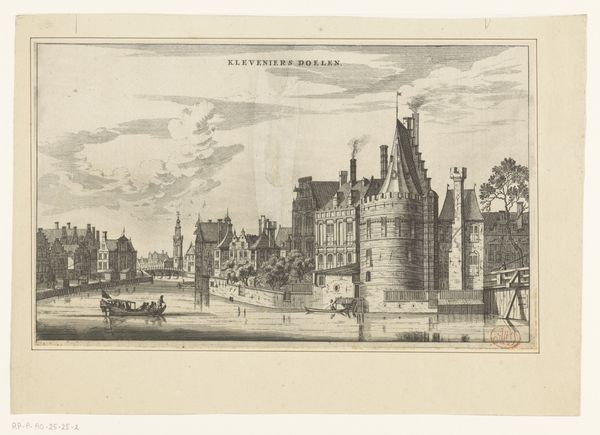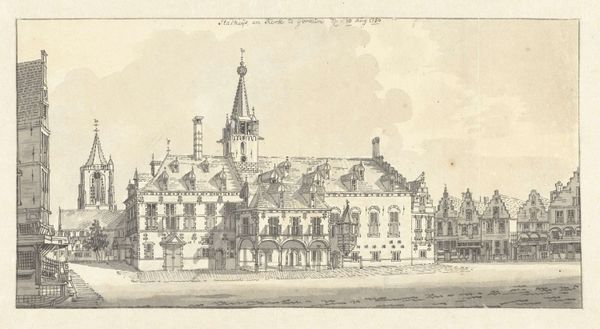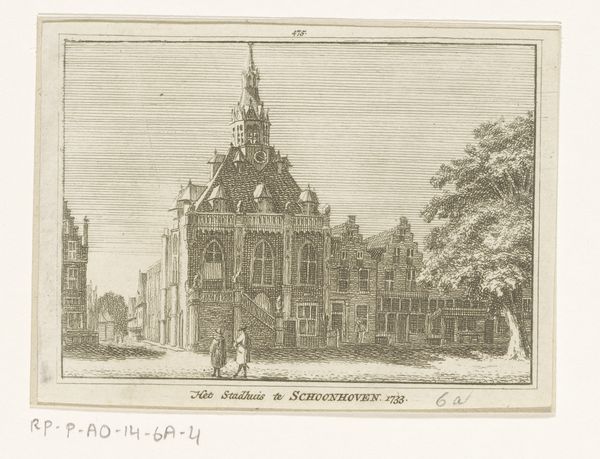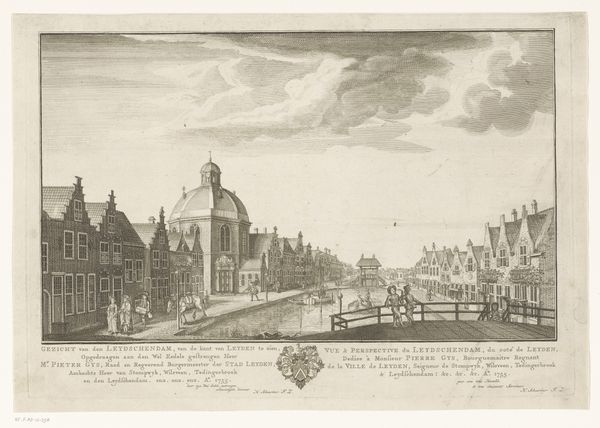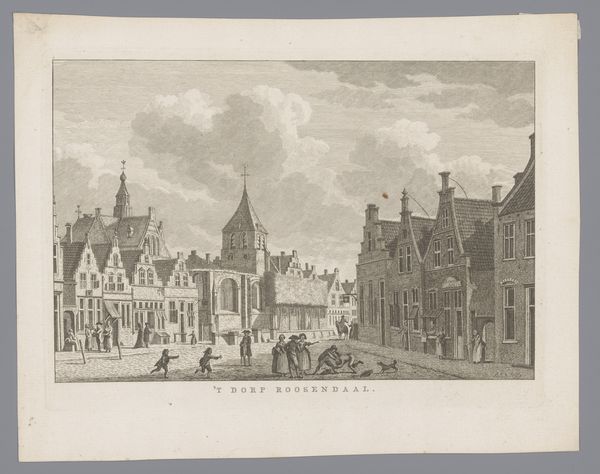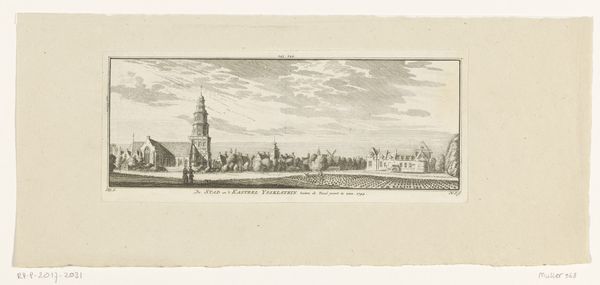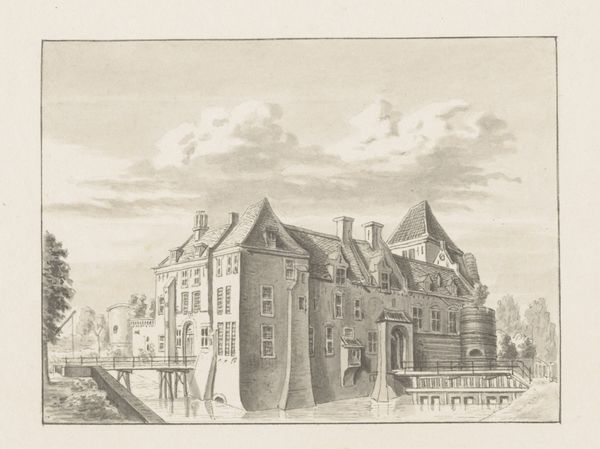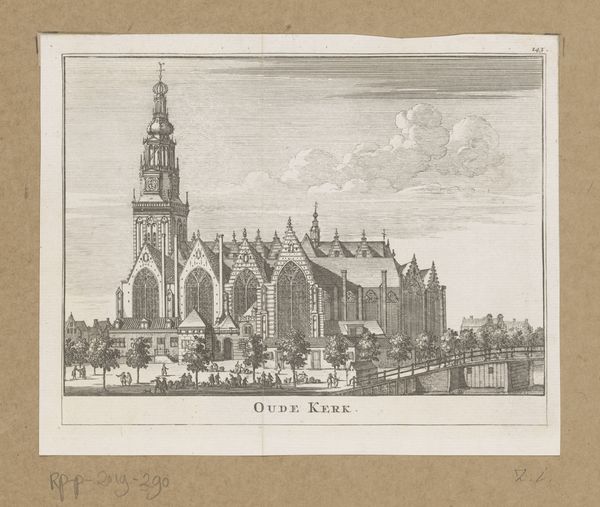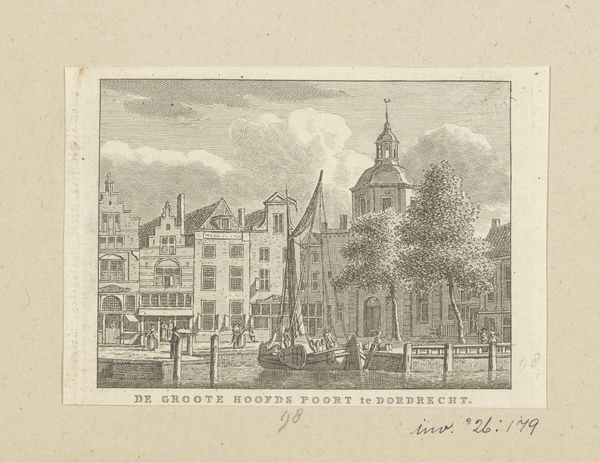
drawing, print, etching, watercolor, ink
#
drawing
#
baroque
#
ink painting
#
dutch-golden-age
# print
#
etching
#
landscape
#
etching
#
watercolor
#
ink
#
cityscape
#
watercolor
Dimensions: height 308 mm, width 430 mm
Copyright: Rijks Museum: Open Domain
Curator: Here we have Abraham Rademaker's "Gezicht op de markt en stadhuis te 's-Hertogenbosch," created sometime between 1685 and 1735. It’s a sepia drawing composed of ink, watercolor, and etching on paper. What strikes you first? Editor: The sheer density of the buildings despite the washed-out tones. There's a geometric rigour, almost a study in planes, in the way the structures rise. And that central tower…it asserts itself as a visual anchor. Curator: That tower, of course, is part of the Stadhuis, or city hall, the symbolic center of power and civic life. Rademaker masterfully captures its imposing presence. But notice the surrounding architecture—the step-gabled roofs, a distinctive feature of Dutch Golden Age cityscapes, reflect a proud mercantile tradition. These buildings stand as testament to prosperity and community. Editor: Yes, but consider also the lantern monument in the foreground. It’s meticulously rendered. Its size and detail contrast sharply with the more distant figures, thereby modulating the experience of depth. Curator: Indeed. These kinds of market monuments can be understood as public art that speaks volumes about values and communal identity. Perhaps even a visual marker to facilitate collective memory for town inhabitants. Editor: True, the strategic placement almost theatricalizes daily commerce. Consider also the artist's conscious orchestration of light, creating layered dimensions and subtly shaping the atmosphere within the marketplace itself. Curator: The sepia wash lends a certain gravitas to the scene, almost invoking a kind of wistful contemplation, doesn't it? Perhaps an idealized memory of a thriving urban centre. Editor: Wistful certainly, though perhaps idealized only for future generations, more as an archive and memory aide to a specific cultural moment. Curator: Very insightful, how it could also be interpreted in that way! It gives pause to consider the relationship between cityscapes, the evolution of cities and what remains over the course of time. Editor: Agreed. A fleeting vision then, permanently captured through structural design.
Comments
No comments
Be the first to comment and join the conversation on the ultimate creative platform.
